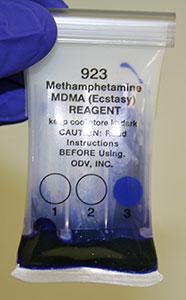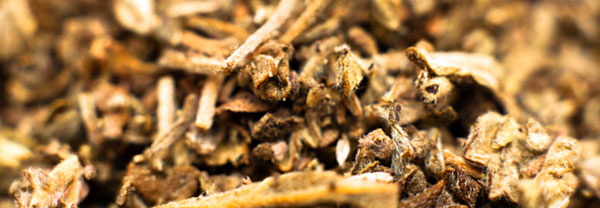Principles of Forensic Drug Chemistry
Forensic drug chemistry is simply chemistry as it is applied to the identification of illegal substances within the criminal justice system. Like all other chemistry disciplines, it examines the way the atoms and molecules in matter interact and bond with each other. All matter has a chemical signature, or set of characteristics that are unique to only that substance. Chemists use these characteristics to identify substances using scientific methods that can be replicated by other chemists and thus are presentable as fact in court. Forensic chemistry covers illegal drugs, explosives and poisons.
Chemical Analysis Flowchart
Click image to view larger version.
What makes a substance illegal?
An illegal drug is defined as a substance that causes addiction, habituation, or a marked change in consciousness, has limited or no medical use and is listed on one of the five schedules within the U.S.C. Controlled Substances Act. These schedules include drugs such as cocaine, heroin, methamphetamines, certain prescription drugs, and marijuana, among many others.
In forensic drug chemistry, analysts use scientific findings to help investigators pursue legal action against individual(s) suspected of a drug-related crime. The goal of forensic drug chemistry is to determine whether the material submitted contains an illegal substance. Based on the results of the analysis, law enforcement can pursue criminal charges and the court can determine appropriate sentencing.
Forensic drug chemists analyze samples of unknown materials including powders, liquids and stains to determine the chemical identity or characteristics of the compounds that make up the sample. Samples submitted as evidence in a drug-related case can contain one compound or a mixture of many compounds. For example, cocaine powder is often cut with other substances such as caffeine or lidocaine. The forensic chemist who receives the sample suspected to be cocaine will need to separate out all the individual compounds and test to see if one of those is cocaine. They do this by looking at the chemical characteristics of each compound and comparing those characteristics to reference material analyzed using the same instrument.
Presumptive & Confirmatory Testing for Drugs
There are two main types of tests used to determine whether an illegal drug is present in a substance: presumptive tests and confirmatory tests. Presumptive tests are less precise and indicate that an illegal substance may be present. Confirmatory tests provide a positive identification of the substance in question.
Presumptive testing may be conducted in the field by law enforcement officers or in the laboratory once the seized material is accepted. Confirmatory tests involve a battery of instrumental tests using techniques such as Gas Chromatograph-Mass Spectrometry (GC-MS) or infrared spectroscopy that separate individual compounds in the substance and positively identify the chemical signature of the illegal substance(s) within the material.
Presumptive testing - is usually colorimetric, meaning the test will indicate that the suspected substance is present or not present by changing color. If the substance is present, the test kit will turn one color, if not, it turns a different color. Presumptive testing by law enforcement is typically followed up with laboratory tests that confirm with certainty the presence of the suspected substance. Presumptive testing is also performed in the laboratory as part of the analysis process.

Colorimetric test to detect the presence of methamphetamine or MDMA (Ecstasy). (Courtesy of NFSTC)
Confirmatory testing - uses instrumental analysis to positively identify the contents of submitted material. This typically requires a multi-step process to separate the individual compounds, determine the chemical characteristics of the compounds, and compare them against reference materials to make a positive identification. This is called qualitative analysis, and determines what substances are present and if one of more of those substances is illegal.
The analyst may have an idea, based on information from presumptive tests or the submitting agency, of what type of drug is contained in the sample. This information, as well as the laboratory policies in place, will determine what tests the analyst will use. A typical battery of tests will include separation techniques to separate the various compounds and spectroscopy instruments to identify the chemical characteristics.
Confirmatory tests, depending on the lab requirements, may also include quantitative analysis of the sample to determine the amount, or purity, of the illegal substance. The purity of the illegal substance is used for sentencing purposes at the federal level. For example, a sample that contains 80 percent pure dextro-methamphetamine HCl will carry a harsher sentence than a sample containing a lesser purity of the drug. High purity often indicates manufacturing or trafficking drugs in bulk quantities for further distribution. A determination of purity is most often required in Federal cases.
Drug Scheduling and Classification
To determine if a substance is illegal, the analyst compares the chemical signature of the compound against those listed on the controlled substance schedules. These schedules, as defined by the Controlled Substances Act, establish penalties for the possession, use or distribution of illegal drugs. Substances are scheduled depending on their potency, potential for abuse, likelihood of physical dependency, and legitimate medical use as outlined below.
- Schedule I - no medical usage, high potential for abuse. Examples include Heroin, LSD, peyote, MDMA
- Schedule II - severely restricted medical usage, high potential for abuse, but slightly less than Schedule I drugs. Examples include cocaine, methamphetamine, methadone, oxycodone
- Schedule III - currently accepted medical usage, moderate potential for abuse, and moderate to low risk of dependence. Examples include barbiturates, steroids, ketamine
- Schedule IV - widely used for medical purposes, low potential for abuse and low risk of dependency. Examples include Xanax®, Valium®, tranquilizers
- Schedule V - widely used for medical purposes, very low potential for abuse, contain limited quantities of narcotics. Examples include Robitussin® AC, Tylenol® with Codeine
Illegal drugs are also classified by category based on the way in which the drug affects the human body and brain. These categories help law enforcement to understand what drug or drugs a person may have taken based on their behavior, appearance and circumstances. For example, a person who has taken a stimulant drug such as methamphetamines will react or respond to police differently than a person who has consumed a narcotic or marijuana. Understanding how different classes of drugs can affect individuals helps law enforcement officers react to, control and question suspects in drug-related cases.
Class |
Some Common Effects |
Examples |
Marijuana |
Euphoria or “high”, altered sensory perception, sleepiness, disrupted coordination/balance |
Marijuana, hashish |
Narcotics |
General sense of well-being, drowsiness, inability to concentrate |
Opium, heroin, morphine, methadone, oxycodone |
Stimulants |
Euphoria or “high”, exhilaration, wakefulness, agitation, hostility, hallucinations |
Amphetamines, methamphetamines, cocaine |
Depressants |
Sleepiness, amnesia, impaired judgment, confusion, slurred speech, loss of motor coordination |
Alcohol, barbiturates, benzodiazepines, GHB, Rohypnol |
Hallucinogens |
Altered perception and mood, mild to severe hallucinations |
LSD, MDMA, PCP, ketamine, mescaline/peyote, mushrooms (psilocybin) |
Synthetic drugs |
Agitation, irritability, impaired perception of reality, reduced motor control, inability to think clearly |
Bath salts (cathinones), DXM, salvia |
Steroids |
Mood swings, hostility, impaired judgment, aggression |
Human growth steroids, testosterone |
Inhalants |
Loss of inhibition, intoxication, slurred speech, decreased coordination, euphoria, disorientation |
Ether, nitrous oxide, butane, cyclohexyl nitrite, amyl nitrite |
Synthetic Drugs
In recent years, use and abuse of synthetic drugs, including “bath salts” (cathinones) and “spice” (synthetic cannabinoids/marijuana), has risen dramatically in the U.S. Between 2010 and 2011, poisoning incidents relating to synthetic marijuana rose by 50% according to the American Association of Poison Control Centers. The number of reported poisonings by “bath salts” in 2011 was 20 times higher than in 2010. The danger posed by these drugs comes mainly from their marketing as legal substances labeled “not for human consumption” to circumvent existing legislation and growing evidence of their highly addictive nature. According to the National Institutes of Health, not much is known about their long-term effects on the human body; however, studies indicate they may be more addictive than many scheduled substances. Synthetic marijuana has become the second most abused drug among high school students, exceeded only by marijuana itself. 1

Synthetic marijuana commonly known as “spice”.
Prescription Drugs
According to the National Institute of Health, more people die from overdoses of prescription opioids than from all other drugs combined, including heroin and cocaine. Abuse is most prevalent among high school and college-aged students. Abusers often think that these substances are safer than street drugs because they are manufactured for medical use. However, when taken in ways or by individuals for which they are not prescribed, they can be as dangerous and addictive as any other controlled substance. In 2007, the CDC reported approximately 12,000 unintentional poisoning deaths involving non-medical use of prescription drugs. Additionally, among individuals who reported illegal drug use on a national survey, nearly one-third indicated that they started with non-medical use of prescription drugs. 2
1 “DrugFacts: Spice (Synthetic Marijuana),” The White House Office of National Drug Control Policy, (2012) accessed 8/20/2013.
2 “Fact Sheet: A Response to the Epidemic of Prescription Drug Abuse,” The White House Office of National Drug Control Policy), (2011) accessed 8/20/2013.
